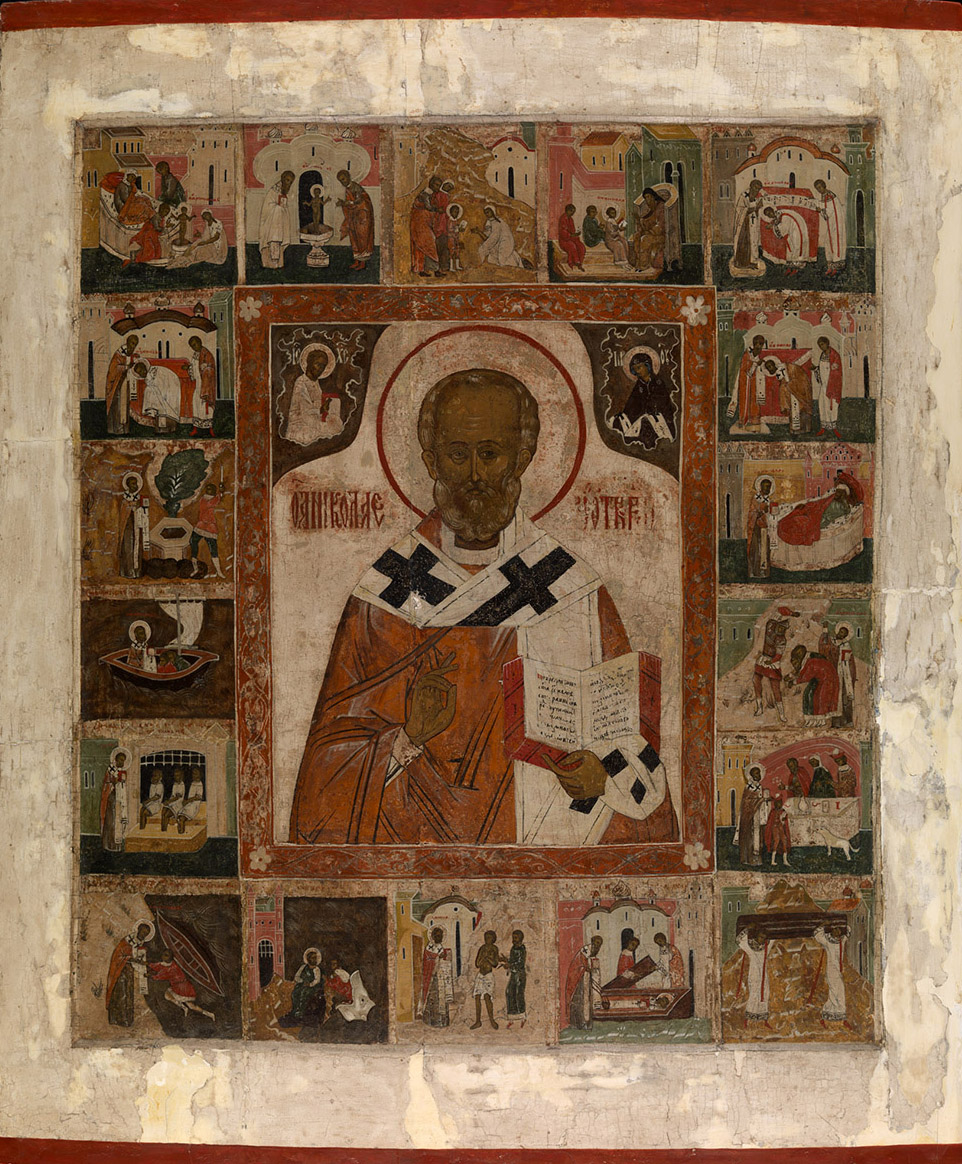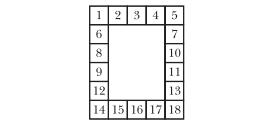MacDougall Auctions 2-3 December 2009
2 December 2009

63. AN IMPORTANT VITA ICON OF ST NICHOLAS
NORTHERN RUSSIA OR ARKHANGELSK REGION, LAST THIRD OF THE 16TH CENTURY
98 by 81.5 cm.
80,000-120,000 pounds
The contents of the scenes:
Scene 1. The nativity of St Nicholas, the miracle of the standing in the font Scene
2. The baptism of St Nicholas
Scene 3. The healing of a withered-handed woman
Scene 4. The education of St Nicholas
Scene 5. The ordination of St Nicholas as deacon
Scene 6. The ordination of St Nicholas as priest
Scene 7. The ordination of St Nicholas as bishop
Scene 8. The cutting-down of the tree and the exorcism of the well
Scene 9. The miracle of the seamen (exorcism of the ship)
Scene 10. The appearance of St Nicholas to prefect Eulalius in a dream
Scene 11. The deliverance of three men from execution
Scene 12. The appearance of St Nicholas to three men in prison
Scene 13. The miracle of Basil son of Agricola restored to his parents from Saracen captivity
Scene 14. Demetrius is rescued from the sea bottom
Scene 15. The miracle of the deliverance of three merchant friends from a flood
Scene 16. The healing of a demoniac youth
Scene 17. The burial of St Nicholas
Scene 18. The translation of the relics of St Nicholas from Myra in Lycea to Bari
This panel is a version of a vita icon of St Nicholas, the Archbishop of Myra, widespread in Russian art of the 16th century, with the half-length figure of the holy hierarch in the central part. He is dressed in modest episcopal robes: the red-orange chasuble and the white omophorion with large black crosses. The image of St Nicholas is accompanied by celestial segments depicting half-length figures of Christ and the Mother of God, handing him the archepiscopal insignia: the Gospel and the omophorion, usually considered as an illustration of one episode from the saint’s life, the so-called “Miracle of Nicea”. A special feature of this icon is the open Gospel book in St Nicholas’ hand, displaying the detailed liturgical text usually read on his feast days. The central image is separated from the vita cycle with a wide, bright-red and richly ornamented frame, the orange shade of which almost fuses with the colour of St Nicholas’s vestments, emphasising his main image in the icon.
The vita cycle consists of eighteen scenes and derives from extended narratives of the second half of the 16th century. It contains subjects popular in the Russian icon-painting
tradition only at that time. The icon scenes replicate the established iconography of separate episodes, repeated many times in works from different regions and also appearing in late 16th-century icons. These include the childhood cycle of St Nicholas, narrated in the first four scenes; as many as three scenes dedicated to the history of his ordination; and three more scenes telling the story of the three commanders, unjustly condemned and saved by the holy Archbishop (the latter three scenes are out of sequence, which is common for that period). The miracle of the three merchants delivered from a flood is well-attested in Novgorodian texts (see scene 15: they are stepping out onto a boulder from the mouth of the whale that rose to the surface upon St Nicholas’s prayer). The rarest scene in the cycle, which appears only in a few 16th-century icons, is the miracle of the demoniac youth (scene 16). The laconic programme of the image (its composition, draftsmanship, and architectural details) is clearly based on much older paintings and must have been deliberately archaised. Such an approach was typical of masters from the large artistic centres of the Russian North, particularly Arkhangelsk, which in the late 16th century preserved the traditions of earlier periods and often borrowed from the art of Novgorod. The colouristic features of the icon, such as the interchange of red-orange, brown and ochre, also connect it with this northern region, as well as the decoration of the central
part of the icon with the motifs imitating folk painting on wood. The professional qualities of the painting, the order of the scenes, the loftiness of the central image of St Nicholas, and the use of the traditional iconographic schemes are all typical of Arkhangelsk icon-painters.

Notes on symbols:
* Indicates 5% Import Duty Charge applies.
Ω Indicates 20% Import Duty Charge applies.
§ Indicates Artist's Resale Right applies.
† Indicates Standard VAT scheme applies, and the rate of 20% VAT will be charged on both hammer price and premium.